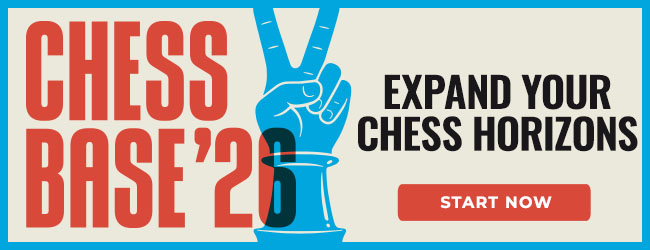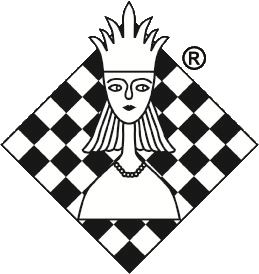 ChessBase
Magazine #153
ChessBase
Magazine #153
Review by Prof. Nagesh Havanur
15th January, 2013. The fourth round in the Wijk aan Zee tournament is
in progress. I had strolled rather late into the tournament hall and gave
only a fleeting look to the Aronian-Anand game and moved on to see other
boards. Moments later I am back and Aronian still has not moved. Then with
characteristic nonchalance he stops the clocks and congratulates his opponent.
The hall breaks into stormy applause.
“One for the ages,” said Carlsen who subsequently won the
tournament with a phenomenal score of 10/13.
The game Aronian,L - Anand,V 0-1 from the fourth round was one of the real
highlights of the tournament. Not just because it involved, in only 23 moves,
an unusually short victory for Black in top-level chess. Anand referred
to the game in the subsequent interview as one of the best games of his
entire career. "To win a game like that against my dreaded opponent
Levon is just great."

In this issue of ChessBase Magazine the World Champion himself annotates
the game.

[Event "Tata Steel-A 75th"] [Site "Wijk aan Zee"] [Date "2013.01.15"]
[Round "4"] [White "Aronian, Levon"] [Black "Anand, Viswanathan"] [Result
"0-1"] [ECO "D46"] [WhiteElo "2802"] [BlackElo "2772"] [Annotator "Anand"]
[PlyCount "46"] [EventDate "2013.01.12"] [EventRounds "13"] [EventCountry
"NED"] [EventCategory "20"] {This was in the 4th round. I had just beaten
Fabiano Caruna the previous day, which made a perfect start for the New
Year.} 1. d4 d5 2. c4 c6 {We went for the Slav Defence, which was no big
surprise. We played this many time before, with reversed colours as well.}
3. Nf3 Nf6 4. Nc3 e6 5. e3 {He goes e3 actually more often, but recently
he has been playing Bg5 a bit.} Nbd7 6. Bd3 dxc4 7. Bxc4 b5 8. Bd3 Bd6
{I went for 8... Bd6, already one idea was exactly what happened in the
game. I wanted to see if he would give me a chance to play 11...Rc8.}
9. O-O O-O 10. Qc2 Bb7 11. a3 {Already one point of 11...Rc8 was shown
in a game between Topalov and Kasimdhanov, a few months back, where after}
Rc8 {Black played Schwarz trotzdem} ({It used to be that everyone played
automatically, in order to play c5,} 11... a6 {and then recently I noticed
some games with 11...Rc8.}) ({Let's imagine the position of the game line
after} 11... a6 12. Ng5 Bxh2+ 13. Kxh2 Ng4+ 14. Kg1 Qxg5 15. f3 {0-1 (53)
Anand, V (2791)-Aronian,L (2750) Linares 2009. There are many games played
with this. White has good compensation with the pair of bishops and the
weak dark squares in return of the extra pawn. In fact I lost a game to
Aronian in 2009, though I was winning. But I managed to confuse myself:})
12. Ng5 {This is the typical reaction and a very logical move. Our big
point, which we found while preparing for the match against Gelfand, was
the move} ({Already one point of 11...Rc8 was shown in a game between
Topalov and Kasimdhanov, a few months back, where after} 12. b4 {Black
played Schwarz trotzdem} c5 {anyway. It's interesting: In the whole line
Black wants to play c5 without even bothering to protect the b5-pawn.
So there is an implied pawn sacrifice in every one of these moves.} 13.
bxc5 Bxf3 14. gxf3 Nxc5 15. dxc5 Rxc5 16. f4 Nd5 17. Bb2 Nxc3 18. Bxc3
Qc7 19. Rfc1 Rc8 20. Bxh7+ Kh8 21. Bd3 Rxc3 22. Qxc3 Qxc3 23. Rxc3 Rxc3
24. Bxb5 Bxa3 25. Kg2 g6 26. Rd1 Rc7 27. Rd7 Rxd7 28. Bxd7 Kg7 29. e4
Kf6 30. Kf3 a5 31. e5+ Ke7 32. Ba4 Bc5 33. h3 Bb6 34. Bb5 Bc5 35. Ba4
Bb6 36. Bb5 Bc5 37. Ba4 {1/2-1/2 (37) Topalov,V (2752) -Kasimdzhanov,R
(2684) London 2012}) 12... c5 $1 {So it looks like that for almost all
what White does, Black can just play c5. So the advantage of 11...Rc8
is that for the next move you have no difficulty remembering... He went}
({After 11...Rc8 12. Ng5 looks even stronger then after 11...a6, because
if you play} 12... Bxh2+ 13. Kxh2 Ng4+ 14. Kg1 Qxg5 {then the R on c8
is worse than the pawn on a6.}) 13. Nxh7 {and I went} ({instead of} 13.
Bxh7+ {I give one variation, just to illustrate the thing:} Kh8 14. Be4
Nxe4 15. Ngxe4 Bb8 $44 {and in fact, ...Qh4 is coming and the Rc8 and
the black bishops are perfectly placed.}) 13... Ng4 { This is the first
point: instead of taking the knight on h7, Black simply moves his own.}
14. f4 {Levon was very much finding the way at the board. So he decided
to go f4 instead of h3, which has to be said is a little bit safer.} ({I
give a variation with} 14. h3 {This line is self evident and in fact if
you analyse with the computer a little bit, it will show all the direct
lines. an.} Bh2+ $1 15. Kh1 Qh4 16. Be4 (16. d5 Rfd8 $44) 16... Bxe4 17.
Qxe4 f5 18. Qxe6+ Kxh7 19. Qxd7 cxd4 20. exd4 Bb8 21. Kg1 Bh2+ 22. Kh1
$11 {The main line ends in a draw, which is quite satisfactory from Black's
point of view.}) 14... cxd4 15. exd4 {After this I actually could not
remember, what we had prepared. This was a bit of a problem, because this
is not the position where you could make a half move or a position that
plays itself. You have to make an exact move, because there is a rook
hanging on f8 and a lot of action. You have to do the right thing. And
there are some possibilities. I was considering moves like 15...e5, 15...Nde5,
15...Qh4, etc. But none of them made a lot of sense. And then I got the
key. Though I could't remember the variations, I rememberd that in some
lines my knight gets to d3. So I mainly rembered the position where my
knight gets to d3 and from this I managed to reconstruct and find this
move ...Bc5.} ({I remembered the line} 15. Nxf8 Bxf8 16. h3 dxc3 17. hxg4
Nf6) 15... Bc5 $1 16. Be2 {I think this is the real mistake. Again it
took me a while, not too long, but the essential idea was very clear.
So I found} ({I give a line, which is fairly straight forward:} 16. dxc5
Nxc5 17. Nxf8 Nxd3 { Black is very, very comfortable with the knight on
d3, but it might be not enough. White might get some sort of half playable
position like the variation here:} 18. h3 Qd4+ 19. Kh1 Ndf2+ 20. Rxf2
Nxf2+ 21. Kh2 Kxf8 22. Qh7 Nd3 23. Qh8+ Ke7 24. Qh4+ f6 25. Qg3 Kf7 26.
Be3 $11) 16... Nde5 $3 {This is simply a brilliant move. So if there is
a single move of which I am really proud in this game, it is move 16.}
({Here I was thinking again:} 16... Bxd4+ 17. Kh1 Nxh2 {but the problem
with that is} (17... Nde5 18. fxe5) 18. Ng5 $1) 17. Bxg4 ({Now, after
Nach} 17. fxe5 {I have} Qxd4+ 18. Kh1 Qg1+ 19. Rxg1 Nf2#) 17... Bxd4+
18. Kh1 Nxg4 {And here, the game which kept on coming to my mind was the
famous classic Rotlewi-Rubinstein. For me, it's just a classic. I imagine
for Gelfand also. He would have rememberd it effortlessly, first of all
he knows his classics and secondly it is Rubinstein. he is one of his
big heroes. Rubinstein's main point was to invade with both rooks, but
except for this it is very similar.} 19. Nxf8 {Here the alternatives were
very clear. In fact, for the rest of the game, there is not much commentary
to give. I will just highlight one or two key things.} (19. Ng5 f5 20.
h3 Rf6 21. Nf3 Rh6 $19) 19... f5 $1 {This move I like very much. Here,
I didn't take much time, because the ideas are very obvious. The queen
is coming to h4, or it's going to f6, capturing the knight and White really
has never a defence. So this was also very easy.} 20. Ng6 Qf6 21. h3 ({The
only thing is after} 21. Ne5 {you have to find muss man} Nxh2 $8 $19 {It's
the only move, but it wins.}) 21... Qxg6 {The other thing is, though Black
is attacking very slowly, Qf6, Qxg6, Qh5 and so on, there is very little
White can do, because of the power of my bishops and the knight on g4.}
22. Qe2 Qh5 23. Qd3 $2 {This loses immediately, but the alternative would
not have changed the result... After} ({There was an alternative here}
23. Rf3 Nf2+ 24. Kh2 (24. Rxf2 Qxh3+ 25. Kg1 Qxg2#) 24... Bxf3 25. Qxf3
Qxf3 26. gxf3 Bxc3 (26... Nd3 $19) 27. bxc3 Rxc3 $19) 23... Be3 { it finishes
immediately. So, one of the best games of my life obviously! Especially
against a giant like Levon. I was very happy, it was a rest day, very
nice...} 0-1
A game worthy of its predecessor Rotlewi-Rubinstein, Lodz 1907. The great
Polish master would have been delighted.
The Zürich Challenge was a four-player round robin tournament, and
the Italian talent Caruana won ahead of Anand, Kramnik and Gelfand. Caruana
remained unbeaten throughout and his rivals lost one game each. In this
DVD Caruana himself annotates his encounter with Kramnik. A fascinating
draw with some incredible variations.
Readers might find the course of Gibralter Masters even more interesting.
This was a massive event (ten rounds with 247 players!) with a number of
leading GMs like Ivanchuk, Shirov and Kamsky biting the dust. In the end
it was Nikita Vitiugov who took the first prize on tie-break ahead of Vachier
Lagrave, Sandipan Chanda and Nigel Short all on 8/10 points.
This brings me to the other sections of the Magazine. There are twelve
detailed opening surveys ranging from the Sicilian to Slav. One valuable
survey is Alexey Kuzmin’s analysis of Slav Exchange, an excellent
antidote to aggressive play by Black. 1.d4 d5 2.c4 c6 3.Nc3 Nf6
4.cxd5 cxd5 5.Bf4 Nc6 5.e3

Alexey Kuzmin shows that on 6...Bf5 7.Qb3 may follow. Today 6...a6 is preferred
after which the author analyses two variations: 7.Bd3 and the more subtle
7.Rc1.
Apart from these surveys, there are regular exercises in opening traps,
middlegame tactics and endgame technique. The section on tactics is a mixed
bag and the more experienced solver might find some of the examples too
easy. But even he would find the following position tough. Black missed
his way in complications and lost. Can you do better?
A missed opportunity

[Event "Gibralter Masters "] [Site "?"] [Date "28.01.??"] [Round "?"]
[White "Houska, Jovanka"] [Black "Villuendas Valero, Adrian"] [Result
"*"] [WhiteElo "2416"] [BlackElo "2301"] [Annotator "Reeh, Oliver"] [SetUp
"1"] [FEN "8/1p4k1/2n1p3/1B1pP3/3P3q/P5p1/3Q1PK1/8 w - - 0 41"] [PlyCount
"19"] [EventDate "28.??.??"] 41. Bxc6 (41. fxg3 $2 Qe4+) 41... Qh2+ 42.
Kf3 Kh8 $3 {An astonishing resource. The point is not to allow an immediate
check with Qg5 and retain the threat to promote the g-pawn (NSH).} ({In
the game Black played} 42... Qh5+ $2 {hoping for perpetual check. But
White managed to evade checks after} 43. Kxg3 {and won.}) 43. Qg5 (43.
Bb5 $2 g2) 43... Qxf2+ 44. Kg4 g2 (44... Qxd4+ 45. Kh5 Qd1+ 46. Kg6 Qc2+
47. Kf6 Qf2+ 48. Kg6 Qc2+ $11 {changes nothing.}) 45. Qh6+ Kg8 46. Qg6+
Kf8 47. Qh6+ Ke7 48. Qg7+ Qf7 49. Qg5+ {If Black tries to escape checks
with} Kf8 {, White has} 50. Kh3 $1 $11 *
In all this DVD has 1,857 OTB games of which 82 are annotated. Apart from
Anand (whose analysis we have just seen) this DVD also has annotations by
veterans like Mihail Marin and Michal Krasenkow. The Tele-Chess section
has 8000+ games of which 43 are annotated by CC GMs Juan Morgado and Roberto
Alvarez. Correspondence Chess is often viewed as a poor cousin of OTB chess.
Hopefully, the efforts of Morgado and Alvarez would help dispel that wrong
impression.
Last but not least, this DVD is an excellent curtain-raiser for the Candidates’
Tournament that followed. We shall see that in the next DVD.
Recommended for both the professional and the
connoisseur.
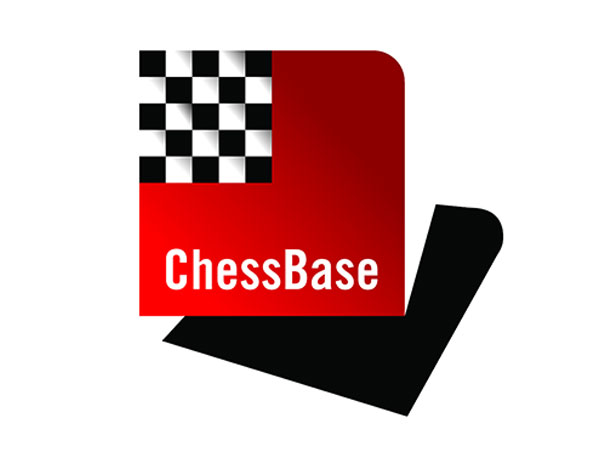













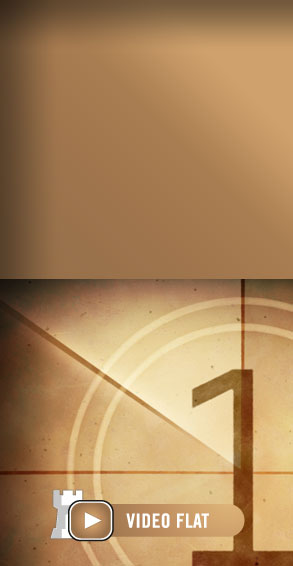
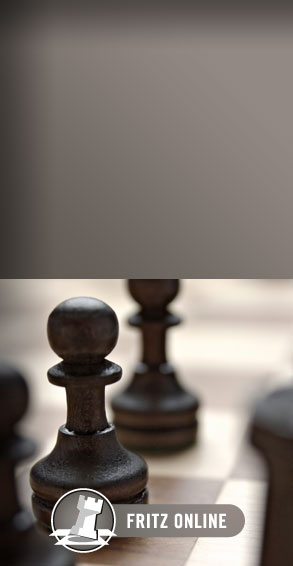
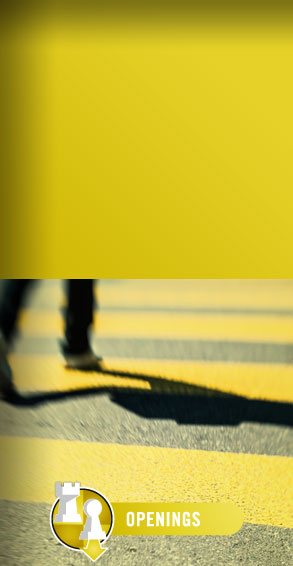
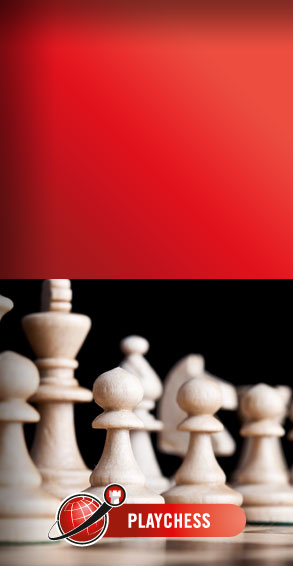
 ChessBase
Magazine #153
ChessBase
Magazine #153